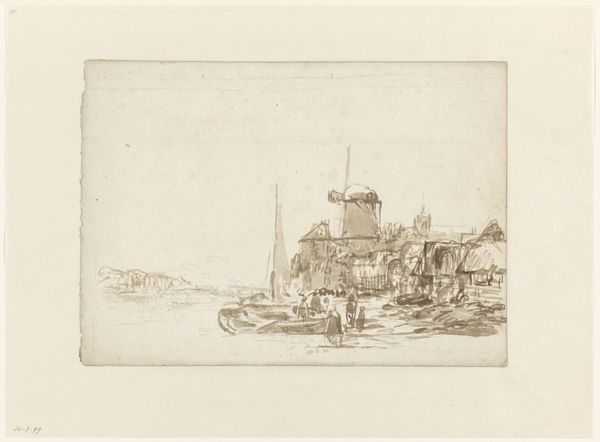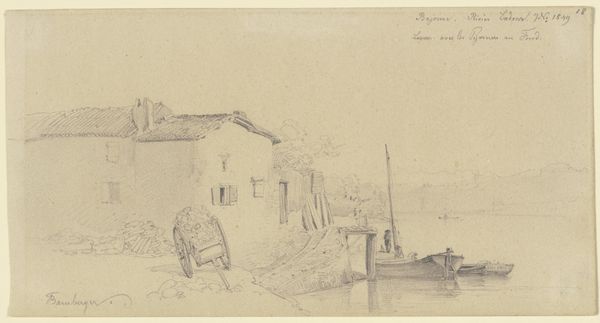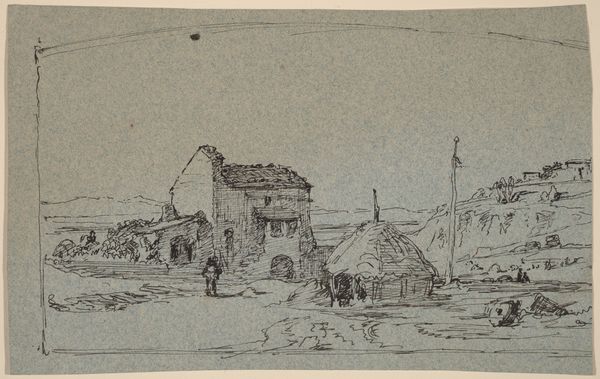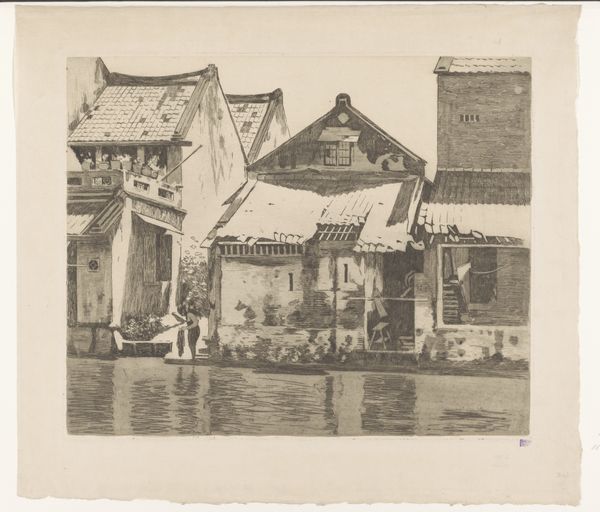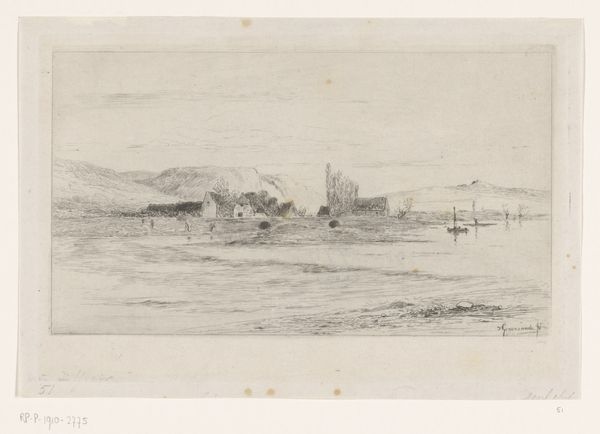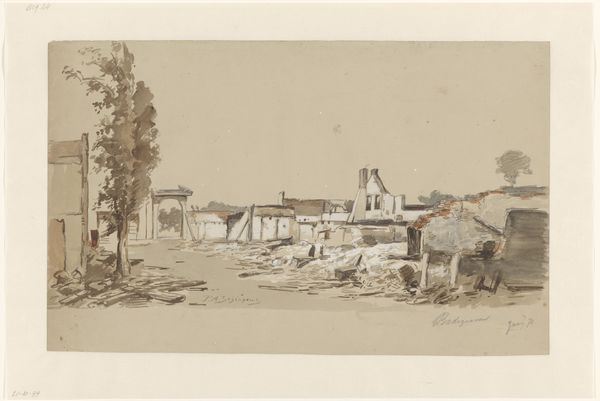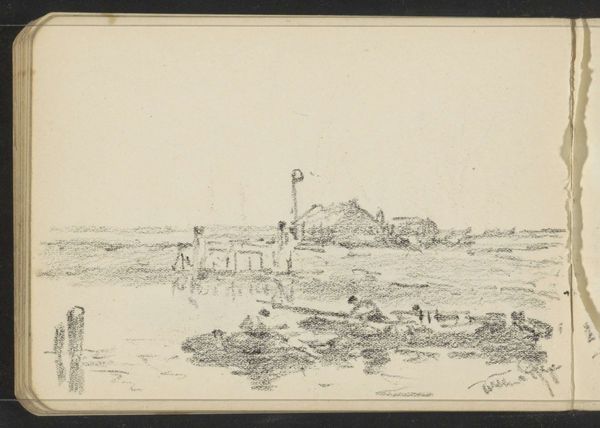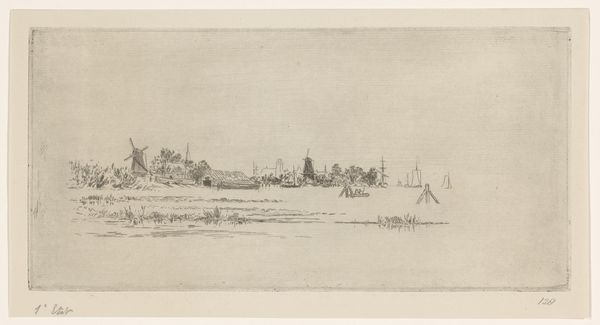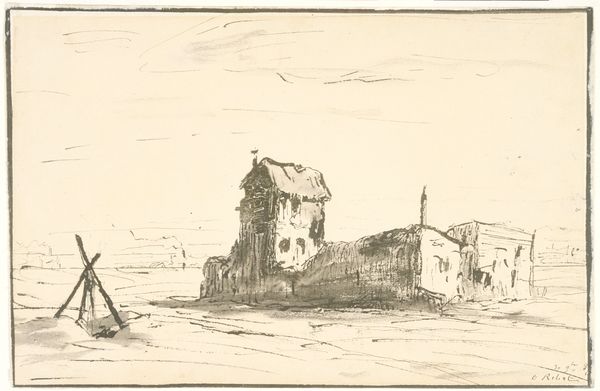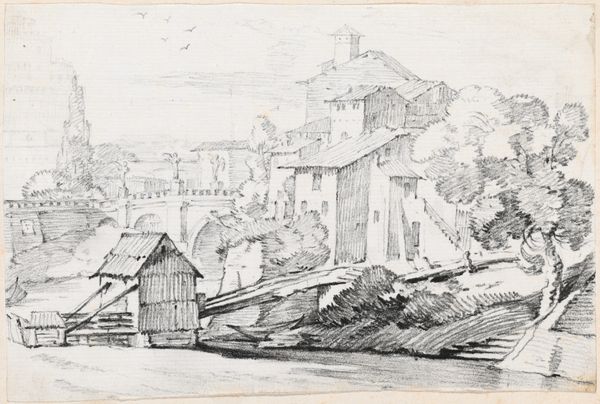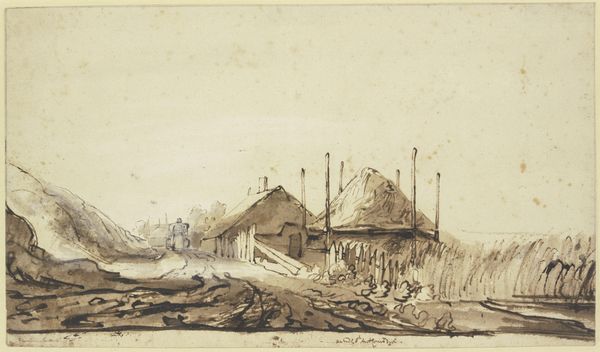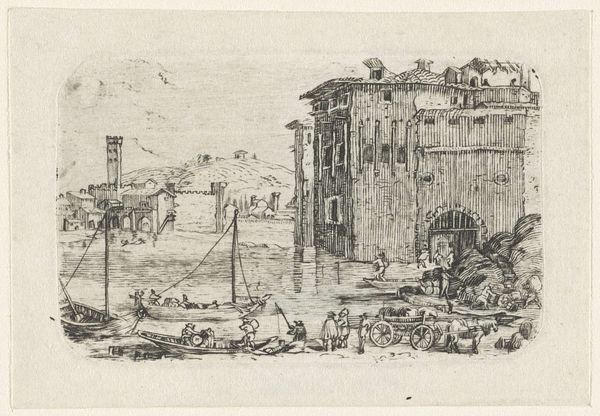
drawing, pen
#
drawing
#
aged paper
#
venetian-painting
#
toned paper
#
baroque
#
mechanical pen drawing
#
pen sketch
#
sketch book
#
landscape
#
personal sketchbook
#
pen-ink sketch
#
pen work
#
sketchbook drawing
#
pen
#
sketchbook art
Dimensions: 11 9/16 x 15 7/8 in. (29.4 x 40.4 cm)
Copyright: Public Domain
Curator: "The Tower of Marghera" by Bernardo Bellotto, dating from 1737 to 1744. This pen and ink drawing on toned paper now resides here at the Metropolitan Museum of Art. What catches your eye about it? Editor: There's a stillness...almost a haunted feeling. The aged paper adds to the sense of something forgotten. The tower itself looks like it's seen better days, looming over these rather ramshackle buildings. It feels like time is just kind of oozing around it. Curator: Bellotto's meticulous approach—evident in the precise pen work—reflects a broader interest in topographic accuracy that defined much Venetian painting of the time. He aimed to capture not just the scene, but its detailed likeness for posterity. Editor: True, but even with the detail, there's still this air of...longing? Maybe for a simpler time? Or maybe just the melancholic beauty of decay. The boats by the dock are quite captivating. And this muted palette adds to the overall ghostly ambiance. Curator: It’s fascinating to consider this within the context of Venetian societal shifts during that period. Bellotto painted several such towers; at the time the area was in decline after several wars that weakened its commerce position within Europe and made the architecture ripe for rendering to remind of its former power. Editor: It is sort of reclaiming power, in some ways, the power of observation, or maybe celebrating a life now past? All this, and yet it's still just a humble pen sketch; the kind you’d expect to see in a well-worn personal sketchbook. Curator: Precisely. And such works had a profound public impact; circulated widely they helped shape the perception of Venice's territories, especially among the Grand Tourists who fueled the art market and established Venice as the artistic hub. Editor: I suppose even casual art carries heavy weight in socio-economic discourse, right? The way Bellotto's rendered light playing on the water is exquisite too... really evokes a feeling that transcends mere topographical recording. You can smell the brine! Curator: Ultimately, I think the importance of Bellotto’s landscapes lies in their historical witness account and documentation of what were strong cultural positions in the art market of his day. Editor: While you explore history and cultural importance, I'll bask in its quiet beauty. It's a landscape both physically present and beautifully distant all at once! Thanks for sharing it.
Comments
No comments
Be the first to comment and join the conversation on the ultimate creative platform.
